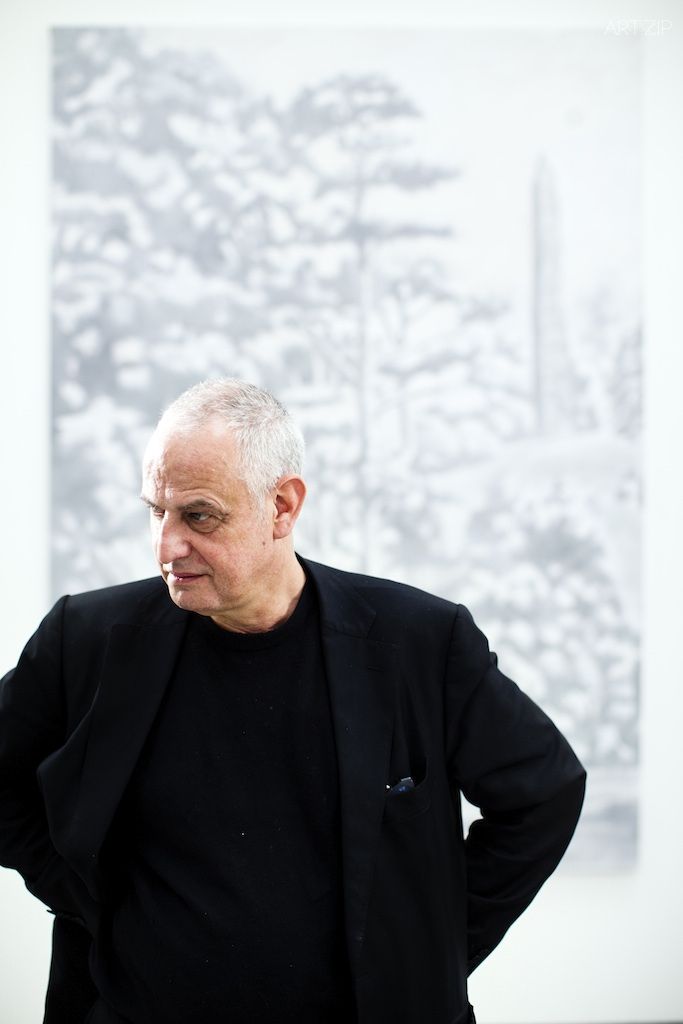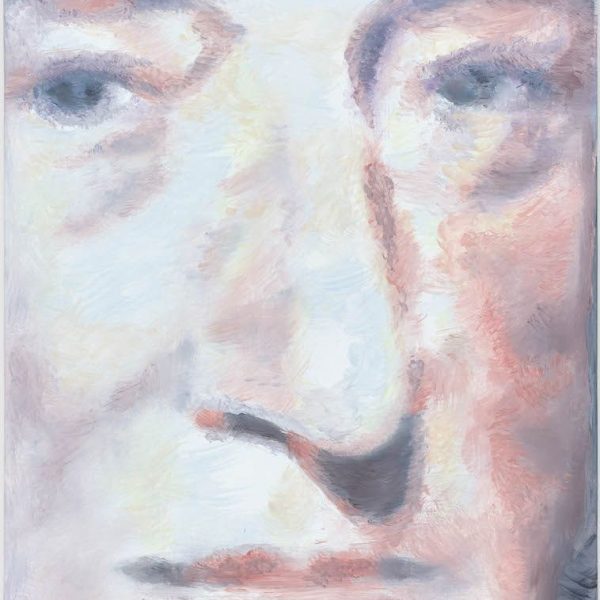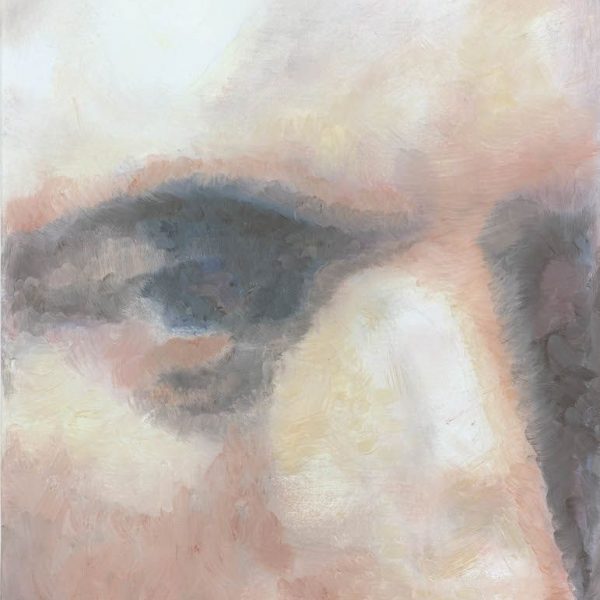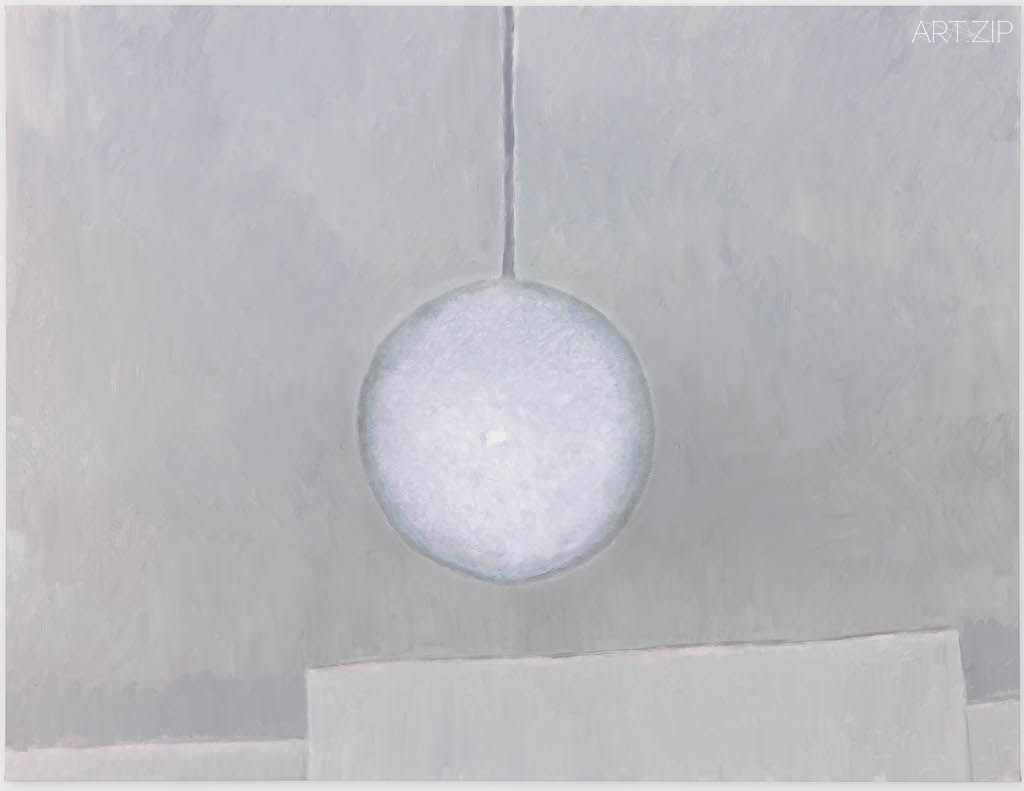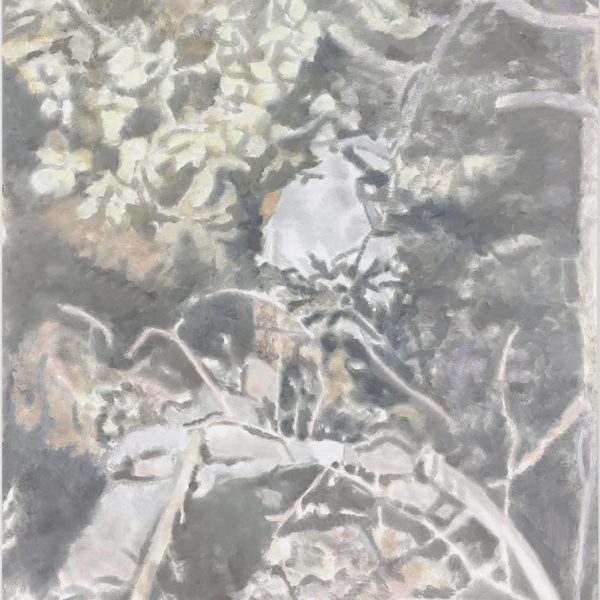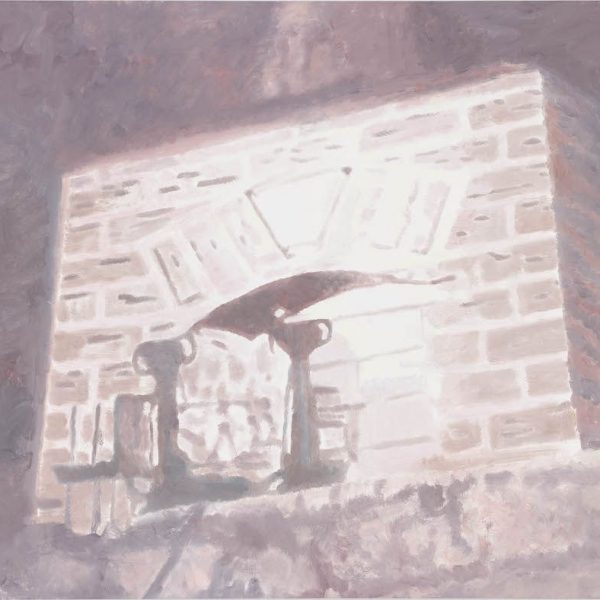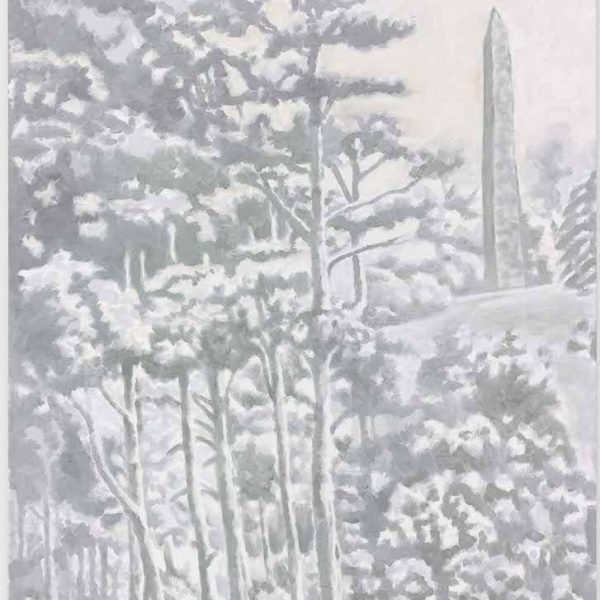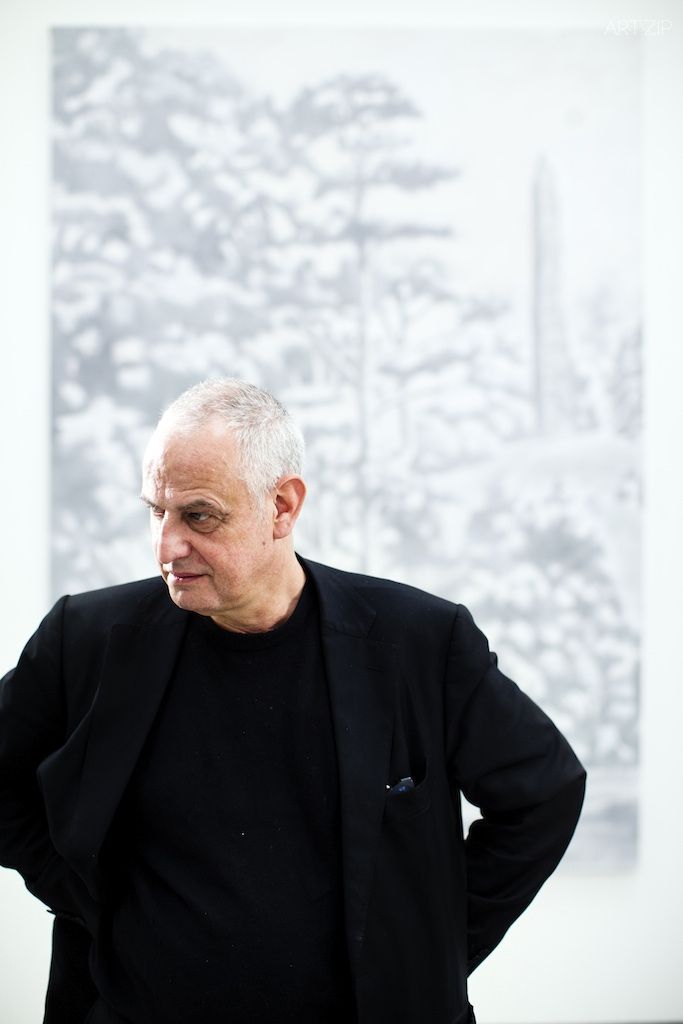
EDITED BY 編輯 x SARAH PETTITT 莎拉·佩蒂特 MICHELLE YU 余小悅
TRANSLATED BY 翻譯 x ELAINE YU 余寧
Luc Tuymans is one of the most prominent contemporary painters, highly regarded for his paintings that draw on visual techniques from photography and film. His works are featured in museum collections worldwide, including Centre Georges Pompidou, Paris; The Museum of Modern Art, New York; Tate Gallery, London.
Tuymans was also the curator of the 2013 group exhibition Constable, Delacroix, Friedrich, Goya. A Shock to the Senses at Albertinum in Dresden. He previously organized A Vision of Central Europe in 2010 at Brugge Centraal, Bruges, Belgium, as well as The State of Things: Brussels/Beijing in 2009 at Palais des Beaux-Arts, Brussels, which traveled to the National Art Museum of China, Beijing.
呂克·圖伊曼斯是當代繪畫界最具影響力的畫家之一,善於將攝影及影像視覺技術融入繪畫中。他的作品相繼被全球藝術機構列為館藏,其中包括巴黎蓬皮杜中心、紐約現代藝術博物館、倫敦泰特美術館等等。
同時他也是位資深策展人,主要展覽項目有群展《感官的沖擊:康斯特勃、德拉克羅瓦、弗裏德裏希、戈雅(Constable, Delacroix, Friedrich, Goya. A Shock to the Senses)》、《中歐的願景(A Vision of Central Europe)》、《事物狀態:布魯塞爾/北京(The State of Things: Brussels/Beiji)》等等。
ART.ZIP:Would you please introduce briefly this exhibition titled The Shore at David Zwirner London?
LT:This is not so much a thematical show, the portraits downstairs are derived directly and indirectly from the Scottish painter Sir Henry Raeburn paintings which are paintings from the Eighteenth Century. Downstairs you have a painting of a chimney, and you have a fireplace, and you have the wallpaper paintings, twice, with the clouds – they come directly from my iPhone when I was in Edinburgh in the hotel. All these paintings are to do with domesticity, because this gallery is like a house. It is also, a sort of ironical play with the idea of the Scottish Enlightenment because now you have this thing with the Scottish Referendum.
And then upstairs it becomes totally different, because the black painting here is actually the image of an execution, and the portrait there is Mr Sagawa, a Japanese cannibal in the Seventies and this was when he was a kid with a mask. This other painting in the back is actually a painting of the lamp in my bedroom. So on the one hand you have the element of domesticity which is reassuring and on the top floor you get something which is actually much more about danger, much more about something which is disturbing. These were the elements that I wanted to put in my show and I called the show after the main painting, the big black one, The Shore.
ART.ZIP:So you curated this show by yourself?
LT:Well, for every individual, solo or museum show I actually install myself. All the gallery shows I also install myself, I have now done 115 solo shows, and maybe over 600 group shows. Group shows I leave to the curator because it is too much, I mean I can’t do everything!
ART.ZIP:Well, we have found the right person to discuss curating a show! Could you remember the first show you curated?
LT:One of the very first times I curated a show was together with an artist colleague and the show was called Trouble Spot: Painting. It was a painting show and that was in 1999 in Antwerp together with the NICC, the New International Cultural Centre, which was at that point the biggest artists cooperative nationwide in Belgium and it was a big show. It was a big show because it was in the space of this corporation which is in the south of Antwerp and also in the entirety of the Museum of Contemporary Art. The idea of the show – we had Richter, we had Ellsworth Kelly, we also had young artists such as Claerbout – was actually exploring the boundaries of painting. On the one hand, two dimensional painting; but on the other, moving away from the two dimensionality into pictorial installation. It was quite exciting to unpack a gold Résonance painting by Yves Klein for example, and then hang it next to something else and make all these different combinations. That was the first show I curated.
ART.ZIP:When you were doing that show, did you feel there was a difference between an artist and a curator?
LT:First of all I don’t want to take away the job of the curators because they are also necessary, but the good thing when you are curating as an artist is that you can move very fast. I can phone Pistoletto, I can phone Robert Gober, because I know all those people. So in a sense you have a totally different position, and also, I think, artist-curated shows are also much more within the visual, less on paper. It’s not that there is no concept, there is a concept, but it is first and foremost about the visual. It is about the experience, and that is a nice addition, I think, to a curator. It is not that I see it as a competition, it is just something different.
I think a lot of curators, especially in the West, come from a network, but not an academic background. It is something different. They come from a training which is not necessarily academic, because an academic is somebody who has an in-depth specialism. These curators are not in-depth, or specialised, instead there is a discourse. This discourse is followed, and it is also taught, and so in that sense it moves away from the visual which is at some points quite difficult because then you get quite a lot of the same shows. You also often get an instigation towards the idea of the political, sociological element within a show which is not uninteresting, but if a show moves more in that direction and the show remains too much on paper and focuses too much on the concept and when it doesn’t visualise itself, that is actually the problem. These people in the network are also part of a power group and so they also protect each other. So it’s not academics, it’s a network.
ART.ZIP:So you mean if artists can be the curators, it becomes easier for them to help other artists to gain a voice.
LT:Yes, I am going to curate a show next September in Parasol Unit, London about Belgian abstraction. It is going to show people who are forgotten and who are dead, but it will be bringing it all back to contemporary artists , so that you can see the influences clearly.
ART.ZIP:When you are working as the curator of a show, which part is most interesting to you? Which part do you pay most attention to?
LT:Well I pay attention to everything. I mean, the first thing is that all the art handled in the show is shown in the best possible way, in the best possible spot, in the best possible co-relation, so that two different works that hang next to each other create a different meaning, create a different dialogue. Those are really important things in order to be able to reconsider things.
I also co-curated a show with Dr Ulrich Bischoff, an academic, who was the director of the Albertinum in Dresden, but they also start with Caspar David Friedrich and so on. The core of that show were four artists – Constable, Delacroix, Caspar David Friedrich and Goya – and around them we went up until contemporary art. That was really interesting because then you were able to make different suppositions. When the curator came from the V&A in London, who was also an academic, with the Constables, he was very skeptical, until he saw the installation and then he became very enthusiastic. So that is what I mean about reconsidering. There has to be something to the show, the show has to be an experience and it has to make people think.
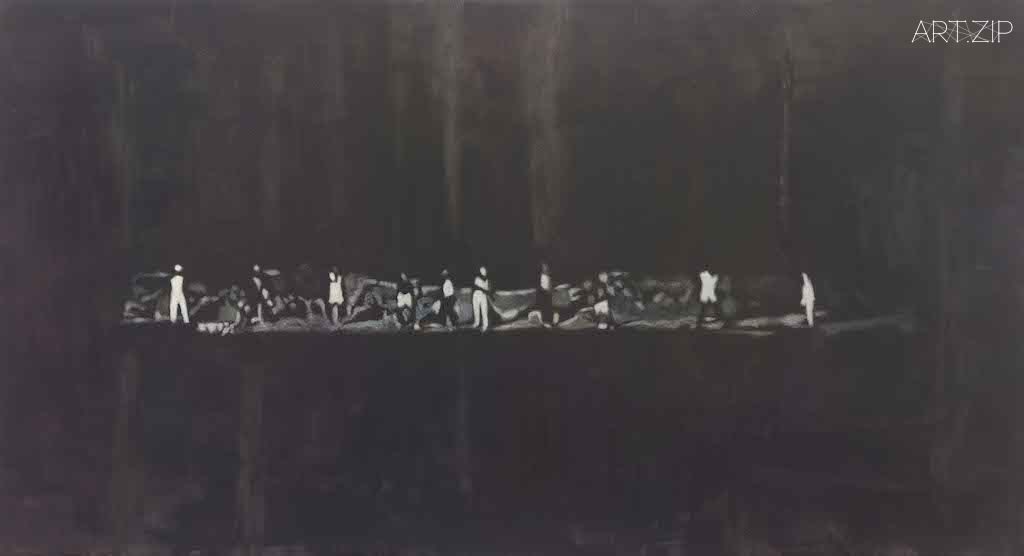
ART.ZIP:Would you concern more about the relationship with the audience when you work as a curator?
LT:Yes and no. Of course when you make a show in a museum it is a public show, it has to be cohesive, it has to have a sense, it has to be perfect, but in the first place it has to also make sense to me, only then can I communicate that to other people. I am also against a lot of wall texts and all of that. Again, people have to look, they have to experience. A lot of the time people tend to underestimate the spectator and you shouldn’t do that, you should allow them the liberty to look and to experience. I mean you should not over estimate or underestimate anybody but you have to feel the right balance. Of course these are all things you think of when you are putting up a show, but in the first place it has to be really exciting.
ART.ZIP:We would also like to know more about the shows you curated in China.
LT:Well, that was quite an experience, I have to say. The first show was very interesting show, I worked with Dr Yu Hui from the Forbidden City, who was also an academic and I worked with the collections from the different museums in Belgium. We started in the fifteenth century up until the twentieth century and that was juxtaposed with Western old masters and that was the first time that this has actually happened. So in Brussels, in the Palais des Beaux Arts, they were all shown together in the space but once we came to the Forbidden City they separated it, they destroyed the concept, which was such a shame because that was the whole point in doing it. We were in the Meridian Gate which is the third gate, that is where the Chinese Emperor would be and the Chinese art was in the back where actually the court used to be, so we had to make a corridor to do that.
And so the second show I did, with contemporary art, I did not want to experience that again – to see the concept destroyed – in fact that was not the case. We worked with Fan Di’an who was the director of the National Art Museum of China, and there we actually managed to keep the concept together and we kept the artworks together and that was really important. When I started to work with Ai Weiwei I told him one way of doing things was to go into the system and see what we can do, because I was very well aware that the show in Brussels had less impact then when it came to Beijing because in Beijing it was the first time for Chinese contemporary artists – and it was 50 / 50 – that they were in the museum, which was really important for them. And it was also not a representational show, it was a real show with a concept and so that was the main aim really to get that show in China, which was not easy but we did it anyway.
ART.ZIP:Would you say for Western people it is about belief structures and in China it is more about the concept as well as the images…
LT:No, the idea is about harmony, and also the big difference and this was really to talk to Dr Yu Hui – every time he showed me a painter – he also told me how old he was. In the West painters have long been, especially who are not nobility that is one thing, maybe only after Velazquez, but that is still questionable. In the West painters are seen as much more eccentric. In China you has the Emperor who made paintings and it had to do with longevity, and so that is the idea of harmony – in the West it is the total opposite – and much more about the idea of confrontation and those are two totally different positions. It is also linked to a problematic element within Chinese contemporary art because, however you look at it, a lot has been derived from the West and it is still quite important, I think, for Chinese artists to create this one entity which is totally, not that it is not connected to the West, of course it is, but there is still a search going on for this connection in a different type of dialogue and that’s what I am curious about.
I am going to do a show next year with Liu Wei who makes very strange paintings, he was also in the China show, with the paintings of people smoking – he is a very interesting painter.
ART.ZIP:From the curated show you seem to have a lot of understanding of Chinese traditional art, were you familiar with it before the show?
LT:Before I was also fascinated by it, but of course to work on it you have to inform yourself, although I didn’t make the choices, they were made by Dr Yu Hui, I think if you work on something as complex as that, it is really interesting to do.
ART.ZIP:What do you think of Chinese traditional art?
LT:Well, I have a book called The Seeds Of Painting, which is about the brush in painting, the way of the brush. It is a catalogue of how you actually paint. You can learn that, like you can learn Western painting too, but it is all about the element where there is something more coming out of your brush. Something that escapes, basically, and that is the masterpiece. That is a bit the same in Western art but there the control is completely different and that always fascinated me, this way of the brush action.
ART.ZIP:Does your role as curator affect your own practice as an artist?
LT:Well not really, because I sort of separate those things. The influence is much more mental but it is not going to shine through in the work or change the work. Sometimes these things also happen together – installing a show and working on my own work.
ART.ZIP:So when you are acting as a curator do you think of yourself as an artist or the opposite?
LT:Well in that instance I would probably take the point of view of somebody who is curating a show, with an artistic vision of course. It is different because you also work with people, you have a team to discuss things with, so it is different from installing a gallery show, for instance. You have to also work with different artists who all have different needs. It is more complicated – a lot more things need to come together.
ART.ZIP:Do you enjoy being a curator?
LT:The funny thing is that I actually was always being asked by people to do it. The very first show another artist asked me to be the co-curator, up until now all the shows I have curated I have been asked to do for them, now if I accept to do something I expect to do it right. But I have never instigated a curated show myself, never.
ART.ZIP:請您大概介紹一下這次在倫敦大衛·茨維爾納畫廊舉辦的展覽《海岸(The Shore)》?
LT:這次展出並非主題性的,一樓展廳陳列的肖像畫靈感直接或間接來源於十八世紀油畫家亨利·雷布恩爵士(Sir Henry Raeburn)的作品。這個展廳有煙囪,壁爐,有兩幅墻紙,和雲朵 – 他們來自於我的iPhone,是我在愛丁堡的酒店中拍攝的。這些畫與家庭生活有關,因為大衛·茨維爾納畫廊這裡的空間就像一座房子。當中帶有一定程度對蘇格蘭啟蒙運動的諷刺,因為早前蘇格蘭公投引發的種種事件。
二樓展廳的作品則截然不同,那幅巨大黑暗背景的畫《海岸》其實是一幅行刑的圖像,而旁邊那幅是日本七十年代食人惡魔佐川的肖像,在作品裡他還是一個帶著面具的孩子。另一幅黑色背景的畫作則是我房間的一盞燈。因此展覽一方面有祥和的家庭元素,而在樓上的空間確是充滿危險與讓人不安的元素。這些是我想展現的題材,我的展覽名稱與大尺幅的主畫作同名:《海岸》。
ART.ZIP:這個展覽由您自己策展的?
LT:是的,我的每個展覽,個展或博物館展覽我都堅持自己來安裝。所有的畫廊展覽也是我自己來安裝的,我已經舉行了115場個展,也許超過600個群展。但群展我讓策展人來負責,因為我不可能什麽都做。
ART.ZIP:您的策展經驗這麽豐富,是否還記得您策劃的第一個展覽?
LT:我早期策劃的展覽之一是和另一位藝術家共同合作的《動蕩:繪畫(Trouble Spot: Painting)》,那是1999年在安特衛普與新國際文化中心(New International Cultural Centre)合辦的一個油畫展,那在當時是比利時展覽規模最大的合作。展覽之所以有很好的規模是因為我們利用了位於南安特衛普的公司空間與整個當代藝術博物館的場地。展覽的概念實際上是探索繪畫的界限,參展藝術家有傑哈‧李希特(Gerhard Richter),埃爾斯沃思·凱利(Ellsworth Kelly),還有年輕藝術家諸如大衛·克萊布(David Claerbout)。一方面是關於二維媒介的繪畫,另一方面是從二維繪畫轉向圖形裝置。當打開畫箱看到伊夫·克萊因(Yves Klein)金燦燦的畫《Résonance(共振)》(1960)時是讓人極其興奮的,然後我們將他的作品設計在其他作品旁來組成不同的效果配對。這是我第一個策劃的項目。
ART.ZIP:當您在策劃那個展覽時,您是否感覺到藝術家和策展人的區別?
LT:首先我並不希望剝奪策展人的工作,因為他們是十分必要的。但藝術家又作策展人時好處就是比較靈活。我可以直接給皮斯特萊托(Michelangelo Pistoletto)、羅伯特·戈伯(Robert Gober)等人打電話,因為我認識他們。所以在某種意義上你處在完全不一樣的位置,另外,我認為藝術家策劃的展覽更注重視覺效果而不是學術理論。我們關注的是體驗本身,而我認為這對策展人來說這是很好的補充。我並不把這看作是競爭,只是不一樣的策展方式而已。
我想,許多策展人,尤其是西方的,靠的是人際網絡,而不是單純的學術背景。策展人的背景也許不是學術性質或理論性質的,因為學究才有極強專業性。這些策展人大都不是深入研究某個特定課題的,或是專攻什麽學科,他們的工作是建立在對話上的。這個對話被關注,被傳授,因此有時候往往脫離視覺,而這樣會陷入一種困境,因為容易造成大量類似的展覽。還有許多挑起政治、社會學元素的展覽,他們並非不是有趣的項目,但是如果展覽都往那個方向走,過於理論化,過於強調理論而忽略視覺體驗,那麽這是有問題的。這些策展人藝術家往往是在同一個人際關系網絡裡的,他們會聯合成為強大的組合互相保護。所以最重要的不是學術背景,而是關係網。
ART.ZIP:您的意思是,如果藝術家作為策展人,他們可以更好地幫助其他藝術家發聲?
LT:是的,我明年9月將在倫敦的傘形單元當代藝術基金會(Parasol Unit)舉辦一個關於比利時抽象藝術的展覽。它將展出被遺忘以及已經離世的藝術家,但是他們將和其他當代藝術家一起呈現,你將清楚他們之間是怎麽互相影響的。
ART.ZIP:當您作為策展人時,哪一個環節最吸引您?哪一個環節您最看重?
LT:我對一切環節都十分注重。我的意思是,展覽中的所有作品都應該以最好的形式被展出,出現在最好的位置,和其他作品發生最好的對話,相鄰的作品能構建出新的意義,建立新的對話。這些在作重新考量和安排時是非常重要的。
我曾與烏爾裏希·比肖夫博士(Dr Ulrich Bischoff)共同策劃一個展覽,他是一名學者,並且是德雷斯頓阿爾伯提努博物館(Albertinum)的館長,一開始我們是先從卡斯帕·大衛·弗裏德裏希(Caspar David Friedrich)著手的。那次展覽的核心是四位大師 – 康斯坦堡(Constable),德拉克洛瓦(Delacroix),卡斯帕·大衛·弗裏德裏希和戈雅(Goya) -以及與他們相關的現當代藝術。那是十分有趣的項目,因為你可以做各種大膽的猜想和假設。來自倫敦維多利亞艾伯特博物館的策展人也是一位學者,作為一位康斯坦堡的專家他對我們的方案持懷疑的態度,直至他看到裝置的效果時他才熱衷起來。這就是我說的“重新考量”的意思。一個好的展覽必須有一些未被發掘的新想法新觀點,它應當是一種啟發人們思考的體驗。
ART.ZIP:您作為策展人是否會更加考慮到與觀者之間的關係?
LT:是,但也不全是。當你在博物館策劃公眾展覽的時候,理所當然的,它得有凝聚力,有意義,它必須盡可能完美,但首當其沖的,它必須對我來說是有意義的,概念是說得通的,這樣我才能把展覽的主旨跟觀者表述清楚。我也挺反對墻上冗長的說明文字。人們需要的是去看,去感受。許多時候人們低估了觀者的理解能力,這是不應該的。我們應該讓他們自由地觀看和體驗。我們不應該高估或低估任何人,但也必須注意找到平衡點。當然,在準備展覽時就應該考慮到這些事情,但前提是展覽帶出來的概念本身就應該是令人振奮的。
ART.ZIP:我們希望對您在中國策劃的展覽有更多的了解。
LT:中國的策展體驗是十分難忘的。第一個展覽十分有意思,是我和學者余輝博士合作的《紫禁城(Forbidden City)》聯展項目,我負責挑選比利時各大博物館的藏品。我們把12-15世紀中國與西方古典大師的作品放在一起做了一個史無前例的對比,這在布魯塞爾藝術館(Palais des Beaux Arts)裡兩者的作品都在同一個空間以比對的方式進行展示。但當我們來到中國時,作品被分開展示了,原來的理念也隨之被破壞了,這是挺遺憾的事。我們的作品展示在子午門,紫禁城的第三道門,這是中國皇帝曾經的住所,而中國作品則放在後面朝堂所在地,因而為了連貫兩者我們做了一條長廊。
在中國做的第二個展覽是當代藝術展,我不希望再有此現象發生,我不想再看到我的初始概念被破壞,幸好也並未發生。我們與中國國家美術館館長範迪安合作,這一次我們貫徹了我們的理念,並且可以將所有作品在一起展示,這是十分重要的。當我開始與艾未未合作時我就和他討論怎麽在體制內作出完美的呈現,因為我擔心在布魯塞爾的展覽來到北京展出影響力不如前者,但我很想把它處理好,因為在北京這是中國當代藝術家第一次在國家美術館進行展示,這對他們來說意義重大。這並不是一個徒有虛名的偽展覽,這是一個有概念的有真正實際意義的展覽,我們主要的目的就是要把這種真正的策展理念帶到中國,這並不容易但我們確實做到了。
ART.ZIP:您覺得是否對西方人來說信仰結構更重要,而在中國概念與圖像更重要?
LT:不是的,中國的藝術是和諧的。(有一個很大的區別就是每次余輝博士給我介紹一位新藝術家時,他都同時告訴我他的年齡。)長期以來,西方畫家們都不是來自於貴族的。在西方,畫家大都被認為是怪人,很少是貴族出身,除了委拉斯開茲(Velázquez),但這還有待考究。但在中國就曾經出現過皇帝是畫家,藝術在中國是和諧的。但在西方則截然相反,藝術家往往是抗衡者,中西兩種傳統理念出自完全不同的立場。這也聯係到中國當代藝術中一個非常值得探討的課題:無論你怎麽看,許多概念的東西都衍生於西方。我認為中國藝術家建立自己獨特的體系是非常重要的,並不是說完全與西方不連接,它們當然是互相聯繫的,但藝術家們仍需繼續努力創建另一種不一樣的對話方式,這是我比較好奇的。
我明年將策劃劉韡的個展,他的繪畫十分奇特,他也參與了之前策劃的中國當代藝術展中,作品是關於吸煙的人。他是一位很有意思的畫家。
ART.ZIP:在您策劃的展覽中您看起來對中國傳統藝術有很好的理解,在策展前您就對它很了解嗎?
LT:過去我為中國傳統藝術著迷,但是要真正策展起來我需要再“補補課”,雖然我不需要挑選中方的藝術品,那是余輝博士決定的。參與如此復雜的項目其實是相當有趣的。
ART.ZIP:您怎樣看待中國傳統藝術?
LT:我有一本書叫 《繪畫的種子》,講的是關於繪畫中筆刷的運用導致不一樣的筆鋒。就像你們學西方油畫那樣,我也學習中國畫裡畫筆該怎麼運用,怎麽放,怎麽收,一旦學會收放自如,那麽就能畫得像大師一樣了。這收放的方式與西方藝術完全不同,我十分欣賞這樣對畫筆的控制運用。
ART.ZIP:您作為策展人的角色是否影響作為藝術家的實踐?
LT:這並沒有影響,因為我會將這兩個身份分開。策展對我的影響更多是精神上的,但這並不會體現在我的作品中,或改變我的創作方向。有時候我又要策展同時又要創作。
ART.ZIP:當您以策展人身份工作時,您是否認為自己是一名藝術家?還是反過來?
LT:在這種情況下,我也許更傾向於自己是一個有藝術家眼光的策展人。
ART.ZIP:您喜歡當策展人嗎?
LT:有趣的是,我很多策展項目都是被邀請進行的。第一次策展時便是一位藝術家邀請我做副策展人,直到現在我策劃的所有展覽都是被邀請的,如果我答應了我就會盡力把它做到最好。但我從來沒有自己發起過一次策展。

